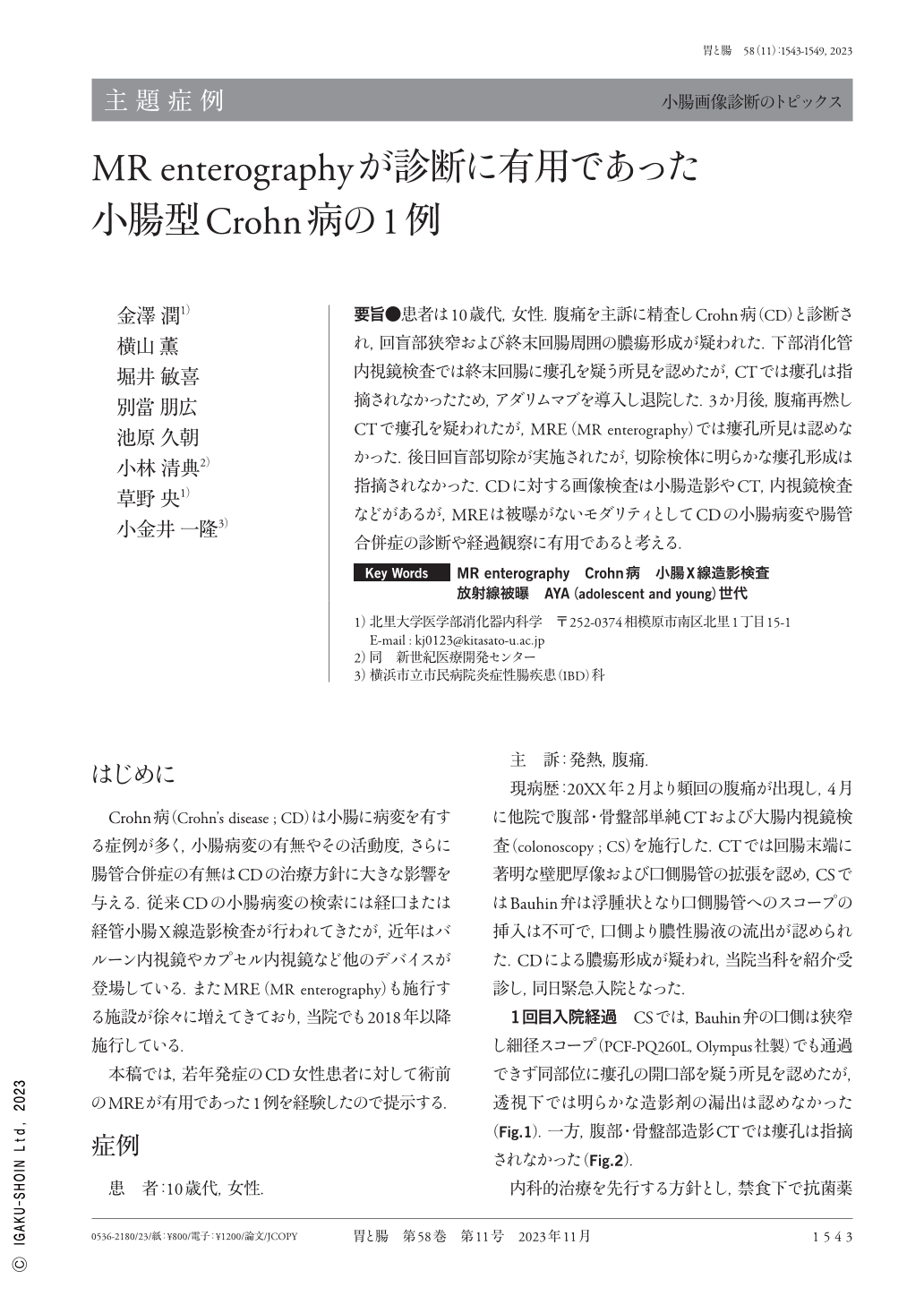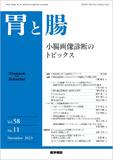Japanese
English
- 有料閲覧
- Abstract 文献概要
- 1ページ目 Look Inside
- 参考文献 Reference
要旨●患者は10歳代,女性.腹痛を主訴に精査しCrohn病(CD)と診断され,回盲部狭窄および終末回腸周囲の膿瘍形成が疑われた.下部消化管内視鏡検査では終末回腸に瘻孔を疑う所見を認めたが,CTでは瘻孔は指摘されなかったため,アダリムマブを導入し退院した.3か月後,腹痛再燃しCTで瘻孔を疑われたが,MRE(MR enterography)では瘻孔所見は認めなかった.後日回盲部切除が実施されたが,切除検体に明らかな瘻孔形成は指摘されなかった.CDに対する画像検査は小腸造影やCT,内視鏡検査などがあるが,MREは被曝がないモダリティとしてCDの小腸病変や腸管合併症の診断や経過観察に有用であると考える.
An adolescent female patient presented with abdominal pain. She was diagnosed with CD(Crohn's disease)after careful examination. Ileocecal stenosis and abscess formation around the terminal ileum were suspected. Lower gastrointestinal endoscopic results indicated a terminal ileum fistula. Conversely, CT(computed tomography)findings revealed no fistula. Adalimumab was initiated, and the patient was discharged from the hospital. After 3 months, the patient presented with recurrent abdominal pain. A fistula was suspected based on CT. However, MRE(magnetic resonance enterography)revealed no fistula. Later, an ileocecal resection was performed but the resected specimen demonstrated no fistula formation. Small bowel enterography, CT, and balloon-assisted endoscopy are standard imaging tests for CD. MRE was considered a useful non-radioactive modality for the diagnosis and follow-up of small-bowel lesions, including complications associated with CD.

Copyright © 2023, Igaku-Shoin Ltd. All rights reserved.


